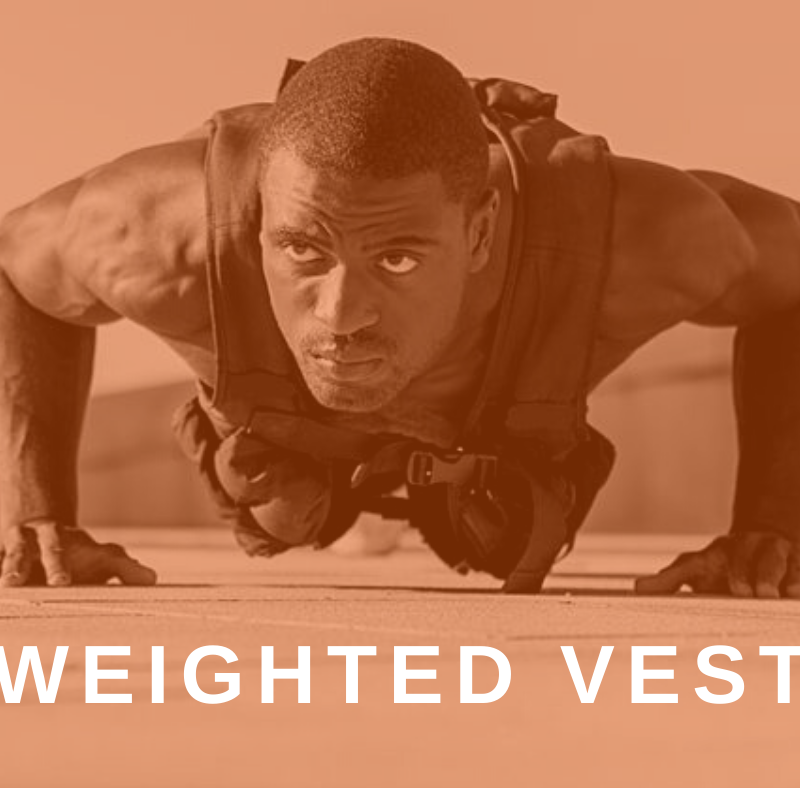
The notion of wearing a weighted vest might occur to a fitness enthusiast for things like pushups and pullups, but what about for other goals? Convincing new research points us in the direction of weighted vests as the latest tools for building power, strength, and propelling weight loss for our personal training clients!
Understanding the “Gravitostat”
In 2018, Drs. Claes Ohlsson and John-Olov Jansson, professors at the University of Gothenburg in Sweden, reported their discovery in rodents of a new system that plays a potentially vital role in the metabolic process. They coined the term “gravitostat” to describe this unique entity.
Working with mice, the two scientists came to view this dynamic as a “heaviness machine” of sorts, a sensor device residing in bones. Functioning similarly to an inbred bathroom scale, the gravitostat appears to continuously monitor a rodent’s weight, striving for maintenance within a specific range. In these studies, the gravitostat appeared to affect the rodents’ appetites, causing them to eat more or less in order to restore homeostasis of body weight.
Amping Up Movement
Unfortunately, humans lack such sensors, most likely owing to the fact that we spend so much of our lives in a sedentary state. As a result, the human skeletal system fails to signal the brain to appropriately “activate” the gravitostat.
As trainers, we regularly encourage our clients to carve out “active hours” within each day. If they are challenged physically in some way, or in the midst of rehabbing an injury, we at least suggest they spend more time standing than sitting. A new and innovative way in which clients can compensate for a sedentary lifestyle involves wearing a weight vest for a designated portion of the day.
Scientists set out to test whether artificially increasing weight loading on obese subjects, accomplished by wearing a weighted vest, elicited any change in body composition. Sixty-nine subjects participated in the study; approximately half received a heavy (11% of body weight) vest and the others received a lighter version (1% of body weight). All subjects wore their vests eight hours a day for three weeks.
At the conclusion of the study, those individuals wearing the heavier vests noted a more pronounced loss in body weight when compared to those carrying the lighter load. Using bioelectrical impedance, assessments of fat mass likewise revealed a greater reduction for those participants wearing the heavier vests. Interestingly, these results matched those observed in experiments conducted on obese rats.
The Versatility of the Weighted Vest
Weight vests worn during workouts may help build muscle mass while concurrently burning excess fat and calories. Such vests vary in design, ranging from as light as 0.5 lbs. up to 30 lbs., according to sources at FitStream. Similar to Velcro ankle weights, some adjustable vests enable the user to add or remove weight bars as he progresses.
“If used properly, weight vests can have extensive benefits in training the cardiovascular system and increasing VO2 max,” says Brock Christopher, CPT, a strength coach at Atlanta’s Porsche Human Performance. Another bit of good news relates to the musculoskeletal system. Bones can actually increase their density as they adapt to handling a heavier load provided from the vest.
If the mere effort of moving seems more challenging while donning a weighted vest, consider the benefits! “You’ll improve your cardiovascular endurance from carrying the extra weight while working out,” says Astrid Swan, a personal trainer based in Los Angeles. In addition, after training while wearing a weighted vest, both conditioning and speed increase once the user sheds the added weight. Power, too, shows an uptick after this mode of training. Brock Christopher has observed improvements among both professional and recreational football and baseball players.
“Used very carefully and purposefully, weighted vests can be added to plyometric exercise,” Christopher says. “Vests can be a great precursor transitioning from bodyweight plyometrics into Olympic/powerlifting.”
How to Train Properly While Wearing a Weighted Vest
Viewed from the outside, wearing/training with weighted vests might not seem very challenging. Therefore, make sure the client understands he or she must make a goal of challenging him/herself. “You should experience some huffing and puffing, even if you’re walking,” says Vicki Harber, Ph.D., a Professor Emeritus at the University of Alberta in Edmonton, Canada.
“You should be a bit breathless as you talk,” she adds. Body mechanics play an important role in deriving the full benefit of weighted exercises, and clients should receive periodic reminders to engage their core muscles. “All movement starts from your core, so it makes sense to keep it strong and engaged while you walk or run,” says Ellie Herman, owner of Ellie Herman Pilates Studios and creator of the Walk-ilates System, which combines walking and Pilates.
Zika Palmer, exercise physiologist and co-founder of ZAP Fitness in Blowing Rock, NC, likewise stresses focusing on the body’s movement through space when exercising with a weighted vest. To maximize momentum, she suggests “keeping (a) forward-leaning position throughout your run or walk. It should almost feel like you have to take a step to catch yourself from falling.”
While Astrid Swan extolls the virtues of a weighted vest when performing bodyweight exercises such as squats and walking lunges, this piece of fitness equipment does have its limits. For example, Swan cautions against expecting an increase in performance by wearing a weighted vest while Spinning, or engaging in calming exercises such as yoga or T’ai Chi.
Further be mindful of holding tension in the shoulders in an effort to offset the weight of the vest. If the vest doesn’t fit well or isn’t worn comfortably, it may create a whole new set of problems.
The Deconditioned Client
Very often we meet a client with little or no previous exercise history, or one whose foray into the gym comes directly upon discharge from rehabilitation. Such a deconditioned individual often shows improvements from wearing a lighter-weight vest at the beginning of his fitness journey. The intensity and significance of a simple walk easily get boosted from wearing the vest, a practice that involves very little impact for such a dramatic payoff. The American Council on Exercise (ACE), in collaboration with scientists from the University of New Mexico, revealed that women who wore vests while engaging in a walking treadmill session utilized 12% more energy in comparison to those without the vests.
Long-Term Studies on the Horizon
Might humans, like rodents, also possess some mechanism for loading-dependent homeostatic regulation of body weight? Ohlsson and Jansson determined that the body composition changes revealed in their studies, specifically the sparing of lean muscle mass and the loss of fat mass, exceeded what one might typically expect following a training session.
They plan to focus further studies on observing whether weighted vests worn for a longer daily duration, or for more than 3 weeks, further propels weight loss. Determining how fat mass gets burned — through an uptick in energy expended while toting around the vest, a reduction in appetite, or simply a concerted effort at increasing mobility – also remains an investigative priority. We look forward to their future results!
How to Choose a Weighted Vest
Just putting in the word “Weighted Vest” into an internet browser brings up thousands of webpage results with a myriad of options to choose from. There are different designs based on a client’s body type, fitness status, and goals. There are also plenty of colors and aesthetic options, too. Here’s a list of logistics to consider when deciding on which weighted vest to use with a client:
1) What’s your client’s goal? Is s/he trying to lose weight, gain weight, increase lean muscle tissue mass, maintain current physique? For example, if a client’s goal is to lose weight the exercise programming is created as a circuit, the client can wear a light-weight vest for the session.
2) What’s your client’s current fitness status? Are they heavy set a.d/or deconditioned? Or have a well-established fitness base? While research shows using weighted vests to add resistance to training sessions can positively impact bone density, using too much weight can be detrimental and lead to injury. This is no different than over-stacking a leg press machine or overloading a barbell while doing a chest press.
No matter what a client’s goals are, it is important to select a weight their body can support without leading to injuries. Also, while working with a client wearing a weighted vest during exercise, carefully observe their posture. A break in posture such as elevated or crowded shoulders indicates the weight is too heavy or they haven’t gotten used to wearing it yet and aren’t moving optimally. Just as if the client was using kettlebells, free weights, or other resistance training implements when there’s a failure to maintain optimal posture we want to figure out why that’s happening and make the appropriate adjustments.
3) Is the weighted vest being used for sports performance enhancement? If so, is the client an endurance athlete or ballistic sport athlete (Karate, Mixed Martial Arts, etc)? Similar training principles and exercise program design apply to weighted vests as other forms of resistance training. For example, if the client’s goal is muscular endurance, a lighter-weight vest would be best. If the client is looking to increase power, a slightly heavier weighted vest would be appropriate while doing explosive plyometric-type exercises. The vest wouldn’t be worn during the entire workout in this latter example.
4) What’s your client’s body shape? There are vests designed for men with broad shoulders and wider, mesomorphic builds, vests designed for thinner, ectomorphic men with longer limbs, and vests designed for endomorphs too (although a bit harder to find).
The varieties are available for women too and these vest designs also take into consideration a woman’s curves and breasts, and of varying sizes. If you would like to have one vest on hand for yourself to train all of your clients and to share amongst them, you can only do your best. You might not be able to find an individualized vest that fits every body type but maybe start by purchasing a more conventional weighted vest that’ll fit most clients (pulled overhead, wraps around the waist, and fastens on the sides or back) and see how it fares.
For the women’s weighted vests, there are two main types: One that can be worn at the shoulders (men who do not have broad backs and shoulders can wear this as well). This vest is good because it can provide a solid external cue to maintain proper posture at the shoulders.
There’s also another one that crosses and fastens at the front in a “Y” shape. This design can be helpful for women who prefer more support for their chest while receiving the benefits of training with a weighted vest. Having a vest fit a client properly leads to the most optimal range of motion (ROM) and functional movement.
Here are some visuals of different types of weighted vests on the market. (Please note, that NFPT doesn’t take an official stance on which one to buy, these pictures and information are for educational purposes only, but they are affiliate links.)



5) Adjustable weights or not? Depending on the type of vest you get, you may be able to adjust the weights. The more conventional vests are more likely to be adjustable. They come with little individual weights that each get a slot within the weighted vest allowing you to choose the total weight by adding or removing them. Be mindful to put the weights into the vest so they are equally distributed and not affect muscle imbalances or posture distortions.
Some of the contoured vests come in one weight only. While these vests are a bit more form-fitting and subsequently more comfortable, the downfall of this more custom fit is that the weights can’t be swapped out. So if you need to adjust weights, you need a whole different vest to do so.
5) How sweaty are your clients? Some people sweat more than others. This can be due to glands, hormones, hydration levels, and/or environment. In this case, weighted vest breathability, ventilation, and material might be a factor. If the client tends to perspire more than others, a mesh weighted vest or one that is made out of more breathable material would be best. A Kevlar-made vest might be very unpleasant for clients who sweat profusely and it would make cleaning and washing it difficult too for you as a personal trainer, keeping up with hygiene standards.
6) Does the client prefer to wear the weighted vest under his/her fitness attire, over it, or without a shirt at all? This is mostly client preference. Obviously, if a client is wearing a weight vest under the shirt, it would be beneficial to have a session that allows the vest to remain on the whole time so time isn’t lost changing and taking it on and off. A weighted vest that goes over clothing is optimal if it is your business’ vest. This is good for hygiene reasons and exercise program design. Unless the design aligns with a client’s goals, you won’t be ‘forced’ to create a program that allows for the vest to stay on the whole time.
Some fitness professionals opt for clients to buy their own vests if the client wants to train with just the vest on or the vest underneath the clothes.
7) What are the purchaser’s budget and resources? Decide if you want to provide the vest for clients or are advising a client looking to buy their own. Do you want to add the weighted vest into your regular exercise training programming and have it as a piece of equipment like you would with kettlebells, dumbbells, etc.?
Or do you want to ask your clients to purchase their own so that they can choose the style, fit, and contour and buy one based on their goals? Consider that they are already working with you and may have a limited fitness budget and not planning on purchasing one. Educating them on the benefits and helping them select one within budget would be great!
Weighted vests are a great way to add variety to a client session which in turn can help with retention and referrals. They can also help create variability in client programming and help reap great physiological adaptations consistent with client goals. Vests can also be one way to help clients who have plateaued. Armed with the advantage of reading this list you can feel confident using weighted vests with clients or recommending a client purchase one.
References:
www.thelancet.com/journals/eclinm/article/PIIS2589-5370(20)30082-1/fulltext
www.shape.com/fitness/tips/weighted-vest-training-workouts-benefits
www.mensjournal.com/health-fitness/weight-vest-workout/
academic.oup.com/endo/article/160/5/1057/5381910
www.livestrong.com/article/403517-what-happens-when-you-wear-a-weight-vest/
newatlas.com/health-wellbeing/weighted-vest-obesity-reduction/
betterbodychemistry.com/obesity/trigger-gravitostat-lose-weight/
www.ncbi.nlm.nih.gov/pubmed/29800288
https://wiki.ezvid.com/best-weight-vests?id=adw&gclid=CjwKCAjwrcH3BRApEiwAxjdPTXO6-Z5_8EcE6OJHmyinO-BmbN0JdfwBLuv_euAQUxmtyjoa6FEN3BoC-z8QAvD_BwE








